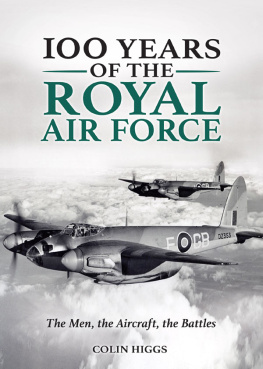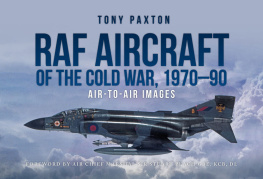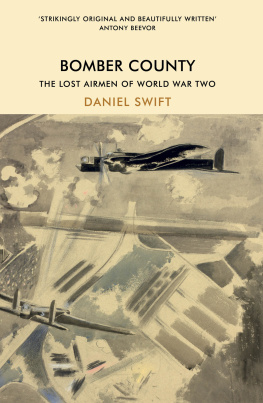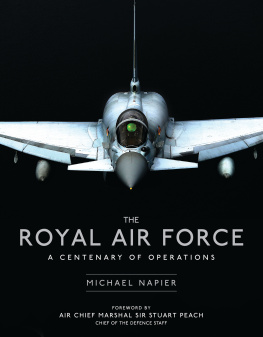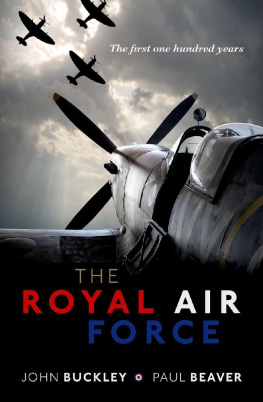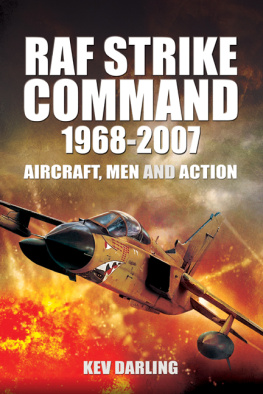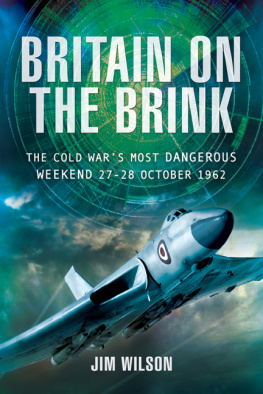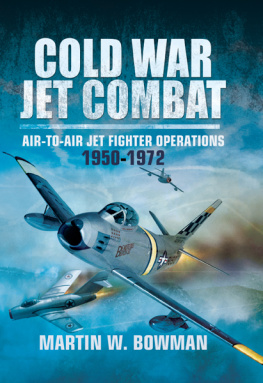
First published in Great Britain in 2014 by
P E N & S W O R D A V I A T I O N
an imprint of
Pen & Sword Books Ltd,
47 Church Street, Barnsley,
South Yorkshire.
S70 2AS
Copyright Ian Proctor 2014
ISBN: 978-1-78383-189-0
EPUB ISBN: 978-1-47384-441-4
PRC ISBN: 978-1-47384-448-3
The right of Ian Proctor to be identified as Author of
this Work has been asserted by him in accordance with the
Copyright, Designs and Patents Act 1988.
A CIP catalogue record for this book is available
from the British Library
All rights reserved. No part of this book may be reproduced or transmitted
in any form or by any means, electronic or mechanical including photocopying,
recording or by any information storage and retrieval system,
without permission from the Publisher in writing.
Typeset by Mac Style Ltd, Bridlington, East Yorkshire
Printed and bound in India by Replika Press Pvt Ltd
Pen & Sword Books Ltd incorporates the imprints of Pen & Sword Archaeology,
Atlas, Aviation, Battleground, Discovery, Family History, History, Maritime, Military,
Naval, Politics, Railways, Select, Transport, True Crime, and Fiction, Frontline Books,
Leo Cooper, Praetorian Press, Seaforth Publishing and Wharncliffe.
For a complete list of Pen & Sword titles please contact:
PEN & SWORD BOOKS LIMITED
47 Church Street, Barnsley, South Yorkshire, S70 2AS, England.
E-mail:
Website: www.pen-and-sword.co.uk
Contents
Introduction
This book offers a photographic portrait of the Royal Air Force during the early part of the Cold War, specifically the years between 1950 and 1970 when it underwent considerable change in form and function. The remarkable photographs that form the heart of this book provide a fascinating glimpse into a relatively neglected period of aviation history, when the RAF fulfilled its defensive and offensive roles during a time of great political tension.
The featured images come from a single collection of approximately ten thousand photographs held by Imperial War Museums. Created between 1952 and 1969 by the Air Ministrys (later MoDs) Photography and Reproduction Branch (PRB), these images were deposited with the Ministry of Defences Negative Library and remained largely unknown until transferred to the museum in 2005. Only a small percentage of this series has been published previously. This book contains over 150 of these images, for the first time published together in their original colour.
Formed of small vignettes, documentary and event photography, the collection offers todays audience an insight into the Cold War duties and day-to-day activities of the RAF. Though there are the expected depictions of royal and military dignitaries and key historical events, the focus throughout is on the work of the ordinary serviceman and woman.
Created as public relations images, these photographs were used by the RAF and the Central Office of Information, appearing in aviation periodicals and newspaper supplements illustrating the work of the RAF. Mostly they featured in brochures aiming to encourage recruitment into a particular branch or trade suffering a shortage of manpower. These two functions have guided the collections content and the images style.
The collections strength lies in the images recording the latest aircraft and the personnel working with them images intended to inspire boys to become the next generation of aircrew. Similarly prominent are sets depicting the learning and lifestyle available during training at the RAF colleges or at the various schools of technical or administrative training for would-be officers and airmen in skilled, ground-based trades. The recruitment of regular, long-term aircrew and technicians declined sharply at times during the 1950s and 1960s, and the concentration on these subjects is firmly illustrative of the collections role in recruitment.
The collection affirms the importance of the RAFs day-to-day role at a time when the public was increasingly separated from it, particularly following the abolition of National Service in 1960. To an audience in the 1950s and 1960s, images of armourers bombing up the V-Force, interceptors scrambling or even the aerobatic display teams recreating stylized aerial combat were seemingly familiar. The public memory of the Battle of Britain and the campaign over Germany was still fresh, while those born after 1945 were surrounded by depictions of RAF heroics in the adventure comics and war films of the 1950s. The Ministrys photographs reinforced the message that the RAF of the Cold War, like its Second World War predecessor, was operating confidently as the front line of British defence. At a time when economic uncertainty questioned the RAFs long-term role, communicating this message was important.
By extensively photographing the introduction of new technology and the variety of roles and experiences undertaken by personnel, a valuable resource and a unique social record of the RAF was created. The RAF is presented in a way in which it wished to be seen; confident, modern and relevant. Yet this confidence belies the uncertainty faced by the service. From the late 1950s, regular defence reviews and budgetary cuts substantially affected the role and shape of the RAF, most notably emanating from Minister of Defence Duncan Sandys infamous 1957 White Paper Defence: Outline of Future Policy, which foresaw a massive change in the RAFs priorities and direction.
This book uses the photographs to introduce elements of the RAFs work during the early Cold War period. The chapters have been selected to highlight the strengths of the collection and represents both operational and non-operational aspects. In the front line were squadrons of Fighter, Bomber and Coastal Commands and Second Tactical Air Force (later RAF Germany), along with the ground units supporting them. From 1950, interceptor pilots in Britain and Germany and later tactical nuclear bomber crews, were maintained at a heightened alert state waiting for orders that would signal the start of war. Similarly, the RAF was the first guardian of the UKs nuclear deterrent, perhaps the best remembered of its Cold War roles. For this role, a fleet of highly iconic nuclear bombers and medium-range ballistic missiles was built up, manned by elite air and ground crews. While in Europe the Cold War never turned hot, overseas the RAF was engaged in a number of successive low-intensity campaigns as it withdrew from its stations in the Far East and Middle East. At a time when global travel was still rare, RAF personnel were deployed to some exotic locations in a number of roles, many saw active service.
Several of the British aircraft operated by the RAF have become icons of the Cold War. Yet, frequently pushed to enter service quickly, many of these only reached their potential after successive modifications. Contending with the ramifications from the 1957 White Paper, and a series of budget cuts, the RAF struggled to equip its squadrons with British aircraft. The unclear direction of a rapidly shrinking RAF led to the demotivation of potential recruits and a related reduction in applicants to be aircrew. This compounded a similar problem in the long-term recruitment and retention of technicians required to operate increasingly technical equipment. To the public, the most visible indicators of the changing RAF were the popular display teams, which regularly performed during the 1950s and 1960s. Beyond their value in PR or recruitment these teams served a purpose, but by the mid-1960s their existence was under threat.
The photographs were deposited with the museum with limited accompanying information and understanding this vast collection and its contents is an ongoing process. To get this far, I have had the help of a number of ex-servicemen, too many to name individually, but I would expressly like to thank Peter Symes, Derek Straw, Chris Moreshead, Basil DOliviera and Min Larkin who were incredibly patient and polite in response to my many questions about RAF life. I am grateful also to Lee Barton of Air Historical Branch who reviewed the text, and to Ting Baker, who patiently edited it. Naturally, I claim any and all errors or omissions as my own. I would like to thank my colleagues for their endless advice, in particular Alan Wakefield, Ian Carter, Mariusz Gasior and Helen Mavin. My last thanks must go to my parents without whom none of this would have been possible. My late colleague and friend Dave Parry, Senior Curator of Photographs at the IWM, himself a former RAF Telegraphist, encouraged me to investigate this collection and inspired me to produce this book and it is in his memory that this book is dedicated.
Next page

